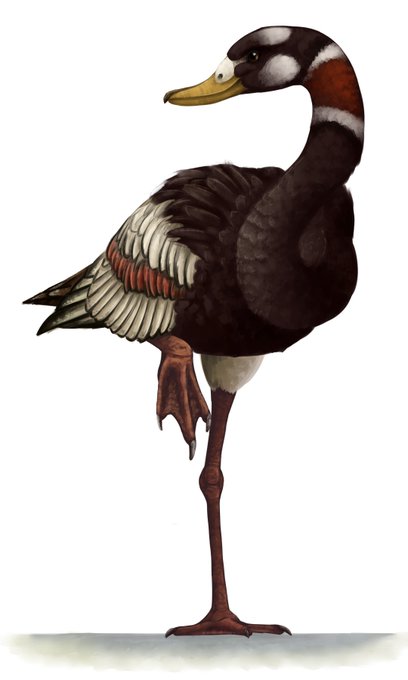This is especially curious when Litorosuchus, Vancleavea's close relative, has quite blocky, vertical neural spines and shorter osteoderms, more like those on sculling reptiles. Why the difference? Is there some functional difference in the way each 'vancleavean' swam? (4/5)
Counillonia is a close relative of Dicynodon that survived the P-Tr extinction (yet another dicynodont lineage to do so!) and is characterised by forward-pointing tusks and eyes directed partly upwards (which I hope come across in my illustration) (Skull 📷from Olivier et al)
The amphibians Trematosaurus and proto-frog Triadobatrachus were also new ones to me, while the leggy crocodylomorph Terrestrisuchus and pterosaur Caelestiventus were more my usual thing.
I was also pulled *well* outside of my comfort zone of bird-y dinosaurs to reconstruct the almost-mammals Thrinaxodon and Morganucodon. The giant dicynodont Lisowicia was entirely up my alley though, and I was naturally aghast when it was knocked out of the running.
A #Dinosaur A Day is back in business! Starting the new year with a new format and snazzy new wordpress page, and from me, new #paleoart of the revolutionary fuzzy neornithischian Kulindadromeus! https://t.co/D6xOsXXAOi
https://t.co/T5PizANfy7
We finally finished ducks on A Dinosaur A Day yesterday! So for #FossilFriday here's a small selection of some of the more notable stem- and crown-Anseriformes I've drawn over the past 5 months. #Paleoart
Akainacephalus obviously takes centre stage for #ThyreophoranThursday, but since you can never have enough thyreophorans here's some #paleoart of the spiky stegosaur Tuojiangosaurus.
We recently finished up with enantiornitheans on a-dinosaur-a-day (newly named taxa aside), and after doing #paleoart for 27 of them, here are some of my personal favourite illustrations!





















